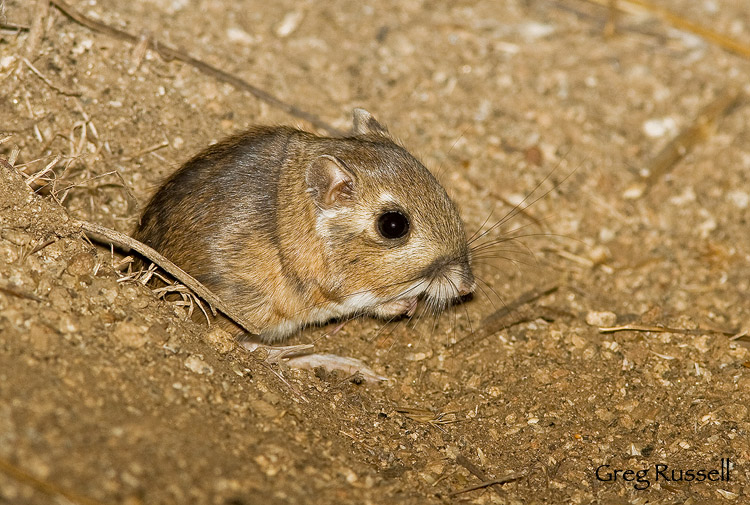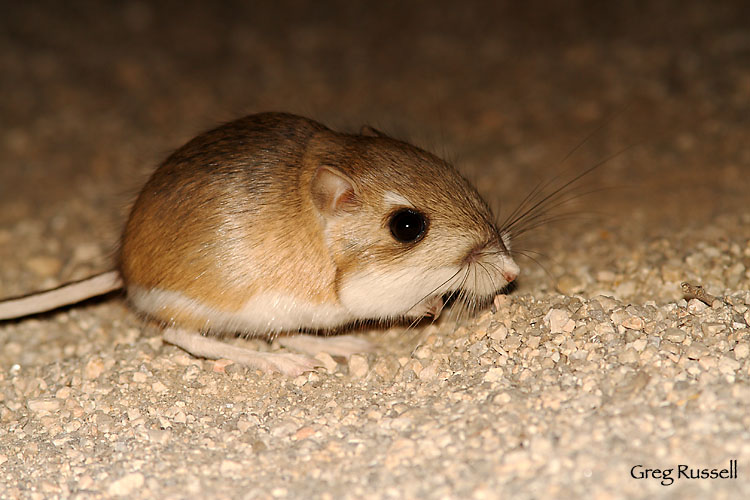In my opinion, kangaroo rats are among the most charming of all animals. Their cheeks–usually stuffed full with seeds–and their huge hind feet make them adorable in my opinion. Those namesake feet are also useful: when combined with their long tails, kangaroo rats can be extremely fast and agile, which is useful when you are avoiding predators like owls and rattlesnakes.
I gained an appreciation for kangaroo rats when I was helping one of my professors in graduate school trap Ord’s and Panamint kangaroo rats for a project he was working on. When we released the animals, they would sit in our hands, almost not wanting to leave. Indeed, it was hard to walk away from those big black eyes, and that cute face.
In southern California, we have several species of kangaroo rats, and they can be fun to photograph. Near my home, the most common are the Dulzura (Dipodomys simulans) and the Stephen’s kangaroo rats (D. stephensi).
Yeah, I know, they look pretty much the same. Most species of kangaroo rats do. In fact, if an expert on these little creatures hadn’t confirmed their identity for me, I probably wouldn’t be able to tell the difference. These photographs were taken less than one mile from each other; the Dulzura k-rats like rocky country, and the Stephen’s k-rats like open, grassy areas. In fact, the chosen habitat of the Stephen’s kangaroo rat is probably partially responsible for the fact that its Federally-listed as an endangered species.
You see, open grassy areas are also the preferred habitat of housing developers. As huge areas of land have been cleared for new housing in southern California, habitat is being taken away from these small creatures. While some people had serious problems with the idea that a ‘rat’ was being protected by the Federal government, I hope you can see that this little creature is much more interesting and charming than your typical rat. To see all of my Stephen’s kangaroo rat images, click here. To see all of my Dulzura kangaroo rat images, click here.
If you venture further into the Mojave Desert toward Joshua Tree National Park, you’ll find the Merriam’s kangaroo rat (D. merriami). Again, you’ll see there’s not much difference between this species and the other locals, but apparently enough genetic distance exists to warrant the creation of a new species.
While photographing nocturnal creatures can take a bit of getting used to, and may take one or two tries until you figure out a system that works for you, the rewards are definitely worth it–fantastic photos of these charming little rodents!




Cute, great shots, great info!
I did a trip to Anza Borrego in July (not far from DVNP) and there seem to be a ton of these little creatures around.
Very nice images..can I use the picture of Stephen’s kangaroo rat (Dipodomys stephensi) in my website?
so cute